 Rules I Follow
Rules I Follow
– Steven Herder
After some brilliant blog posts on Breaking Rules recently, it is tantalizingly timely (and great fun) to now consider the “Rules We Keep”. I’m excited to spend time writing about this topic, but even more psyched to see what everyone else comes up with!

1. The Golden Rule – I simply try to follow the Golden Rule whenever I walk into the classroom: “Do unto others as you would have them do unto you”. Many years ago, I remember talking one day with my colleague, pumpkin bunny Chris Mori, about how we each had made a very clear but somewhat unconscious decision to treat our teacher’s room (office for 6-8 English teachers) as our own sanctuary from the outside world. Whatever difficulties we were facing in our daily lives, we left them outside. We were committed to keeping the classroom and our office free from all of the complications of our private lives. We knew that we had to spend 40 hours a week in that space and so we decided to keep it a kind and loving space. Of course it was difficult sometimes, but having the commitment to stay positive and keep things simple, completely affected our approach on a daily basis. As a bonus, I think students benefited a great deal because they knew what to expect from us, and our consistent, optimistic approach to their studies.
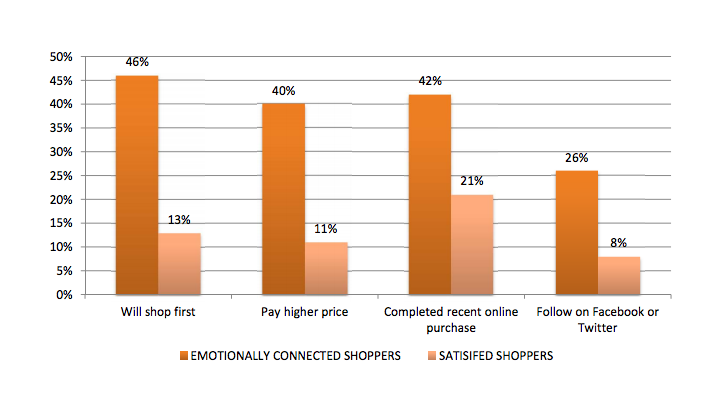
2. The Connections Rule – I continually try to connect with students because I believe it can have a positive influence on their learning:
- They try harder when they feel a connection to the subject, the teacher or classmates.
- The more I connect and get to know them, the better I can understand them and tailor my approach to their specific needs.
- The more emotionally connected I feel to a class, the more satisfaction I get from teaching them.
- When I open up and share parts of my daily challenges as a teacher, they gain trust and begin to share as well.
The power of emotional connections has clearly been documented in a great number of fields. Here, for example, is a great little graph showing the difference between satisfied shoppers and emotionally connected shoppers.

3. The Expectations Rule – I always try to be clear, realistic and positive about my expectations for any group of learners, while at the same time trying to develop individualized expectations for as many students as appear to need a special set of expectations. For some students, targets well beyond the class goals are appropriately challenging, while for others, just getting to class on time and having their study tools ready (notebook, text and pencil case) is an excellent expectation to begin with.
Of course, the main point is for students to know that you expect them to improve, and that you will do your part to help them succeed; now – how that manifests itself can be in any number of different ways, but if learners feel pressure from the teacher to perform well, and the teacher helps the learners to reach some form of success, then it becomes a win-win situation. Both the learner and the teacher can leave the class feeling good about themselves at the end of the course
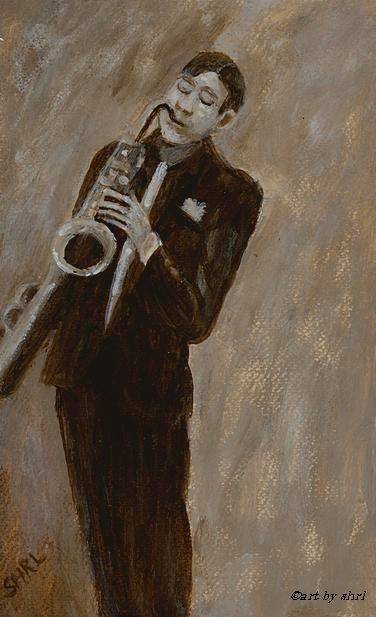
4. The Riffing Rule – I wrote a full post on the idea of SLOW Moments. Check out this excerpt and read more if you’re interested:
These “spontaneous learning opportunity windows (SLOW)” are moments that I have grown to love and cherish. I define them as those serendipitous moments when everyone is suddenly focused on exactly the same thing. It may be triggered by a student’s comment, a joke, a mistaken answer, something from the textbook, or something the teacher has just said. At that moment, everyone’s brain has stopped and a small window has opened. If the teacher is ready, it is very easy at that moment to slide something through the window and…
Finally, a rule that I usually keep to myself is that,
If I continue to try my best, it’ll all work out in the end.
If a lesson or an idea doesn’t work, I now know that I can make it better next time.
If I define and maintain my own basic principles of teaching, I will succeed.
As for the daily challenges and curves that come my way, I will just work them out day by day.
Connect with Nina, John, Marco, Steven, Alexandra, James and other iTDi Associates, Mentors, and Faculty by joining iTDi Community. Sign Up For A Free iTDi Account to create your profile and get immediate access to our social forums and trial lessons from our English For Teachers and Teacher Development courses.
Like what we do? Become an iTDi Patron.
Your support makes a difference.

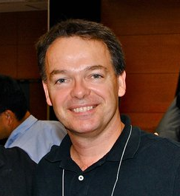
 Doing and Being: How Mike Rolls Michael Griffin
Doing and Being: How Mike Rolls Michael Griffin As an enthusiastic rule finder, bender, breaker and scoffer it was interesting and hopefully useful for me to think about which rules I always try to follow. For other teachers reading this who are allergic to rules being imposed on them (like me), I must mention that these are not rules I am suggesting you follow but just sharing rules that I choose to follow for myself.
As an enthusiastic rule finder, bender, breaker and scoffer it was interesting and hopefully useful for me to think about which rules I always try to follow. For other teachers reading this who are allergic to rules being imposed on them (like me), I must mention that these are not rules I am suggesting you follow but just sharing rules that I choose to follow for myself. As I wrote this list I realized that a lot of my rules are things to be rather than things to do. Perhaps this shows that for me a lot of teaching is more about being than doing.
As I wrote this list I realized that a lot of my rules are things to be rather than things to do. Perhaps this shows that for me a lot of teaching is more about being than doing. Malu’s One Rule – Malu Sciamarelli
Malu’s One Rule – Malu Sciamarelli 

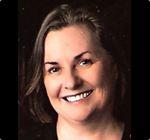 I’m not a terribly consistent rule follower, I’ve discovered. There are, however, two rules about teaching that I have been pretty good about keeping. They are:
I’m not a terribly consistent rule follower, I’ve discovered. There are, however, two rules about teaching that I have been pretty good about keeping. They are: For example, the idea that teachers should incorporate techniques to reach different learning styles or multiple intelligences has been largely discredited in research studies. Not only is there no proof that teaching to different modalities is useful, there is evidence that it can be counter-productive. However, thinking in terms of learning styles is still a useful rubric for lesson planning, and getting teachers to see that they tend to teach in the way that they like to learn is a valuable step in encouraging them to experiment with different ways of presenting material. For many teachers, the idea that the same material can be taught in a variety of ways is new, and liberating. The idea that students process information in different ways resonates with teachers.
For example, the idea that teachers should incorporate techniques to reach different learning styles or multiple intelligences has been largely discredited in research studies. Not only is there no proof that teaching to different modalities is useful, there is evidence that it can be counter-productive. However, thinking in terms of learning styles is still a useful rubric for lesson planning, and getting teachers to see that they tend to teach in the way that they like to learn is a valuable step in encouraging them to experiment with different ways of presenting material. For many teachers, the idea that the same material can be taught in a variety of ways is new, and liberating. The idea that students process information in different ways resonates with teachers. Do I think all teachers should use learning styles as a rubric for planning lessons? Do I think all teachers should use rewards? No, of course not. What works with one of my classes may not even work with another of my classes, let alone another teacher’s class. Each group of students has its own dynamic, and requires a slightly different teaching style.
Do I think all teachers should use learning styles as a rubric for planning lessons? Do I think all teachers should use rewards? No, of course not. What works with one of my classes may not even work with another of my classes, let alone another teacher’s class. Each group of students has its own dynamic, and requires a slightly different teaching style.
 Rules, Principles, and Change – Vladimira Chalyova
Rules, Principles, and Change – Vladimira Chalyova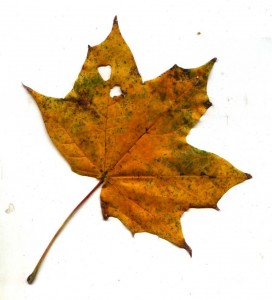 A rule, law, or regulation is a prescribed guide for action. That could be the definition you can get from any dictionary. For me, a rule is something that you try to keep in mind as a line that shouldn’t be crossed — unless it is unavoidable.
A rule, law, or regulation is a prescribed guide for action. That could be the definition you can get from any dictionary. For me, a rule is something that you try to keep in mind as a line that shouldn’t be crossed — unless it is unavoidable. Whether we’re talking about rules from the first or the second group of rules, over time we may find ourselves questioning them and may find them unsuitable for the present situation. That is the moment we can be called rule-breakers, inconsiderate or even insane. That is the moment we look for change and a way to overcome a present situation that no longer allows us to grow. That’s when we change.
Whether we’re talking about rules from the first or the second group of rules, over time we may find ourselves questioning them and may find them unsuitable for the present situation. That is the moment we can be called rule-breakers, inconsiderate or even insane. That is the moment we look for change and a way to overcome a present situation that no longer allows us to grow. That’s when we change.